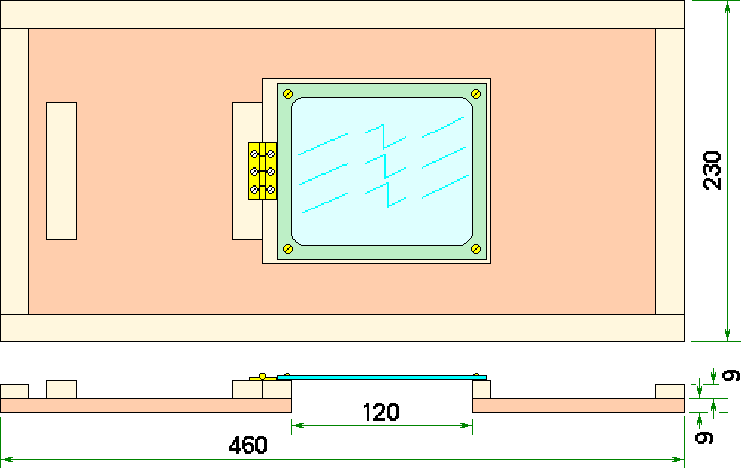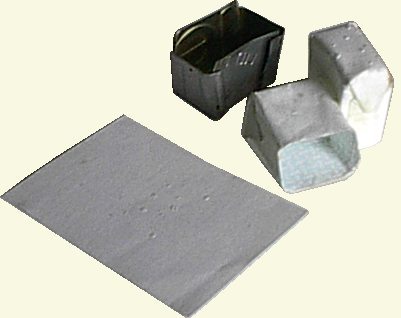Breeding Bits
|
|
|
|---|
|
Breeding Bits |
Observation Board, for Queen Introduction |
|---|
In order to use the Steve Taber/Albert Knight/John Dews Method of queen introduction, we require a cover board (or inner cover) modified as follows.
The method itself is described under the heading Queen Introduction. This is not intended as a 'run of the mill' introduction method, but one for use where the race or strain of the introduced queen is very different from the stock that is populating the nucleus. A five frame nucleus is used for this purpose as the introduction of valuable breeding stock (and sometimes elderly) queens should not be attempted using a full sized colony. The emphasis is on certainty and safety of acceptance rather than speed. The board itself allows observation of the progress of acceptance without disturbing the bees directly.

The notes below refer to a five frame nucleus board that is suitable for a top bee space box of British National size, if you have a bottom bee space nuc or other type of equipment you will need to adjust the dimensions accordingly.
I made my hinged "windows" using 12 mm plywood for the frame and 2 mm thick acrylic sheet. I used double-sided adhesive tape and brass round headed screws to secure the acrylic sheet. The small block at left of the window is so that the hinge is not sprained when the window is fully open.
The window allows observation of a Butler type queen introduction cage that has been placed along the central frame.
When the wire biting activity stops the queen is released by removing the plastic protection for the newspaper closure, so that the workers can chew through the paper.
Biting activity can easily be detected as there is a small light coloured spot on the rear of a workers head that will 'wink' as the bees gnaw at the wire.
Since this page was first produced I have redrawn the board with a longer window (120 mm instead of 100 mm) to accommodate Butler cages that are in common production that were longer than those that I initially used. I also replaced the plastic shielding for the release paper with a slip-on thimble made from thin tinplate sheet salvaged from a can. I pre-form the release papers from the type of white paper that stationary envelopes are made from. These have pinholes stabbed into them and they are formed over the back end of the Butler cage using diluted PVA wood glue. The picture at right also shows a piece of paper that has been trimmed to size and has had the pinholes stabbed in the central region. The examples shown in the photograph are now carried in one of my apiary work boxes as a matter of course. |

|
|---|
This method may take a little longer, but if followed precisely will result in 100% live introduction of queens, even those that are of totally different race. Since I made a couple of these boards (April 2001) I have used this method exclusively and have had zero failures... Some of the introductions have taken ten days and most have been six or seven days. These long times are a reflection of the racial differences between the queen and the stock. Many of the queens involved have been breeding stock that was one or two years of age already and this may not be the case with the majority of queen introductions that beekeepers perform.
Originated... Spring 2001, New Domain... 12 May 2004, Additions... 13 May 2004, Upgraded... 31 January 2005, |
![]()
![]()